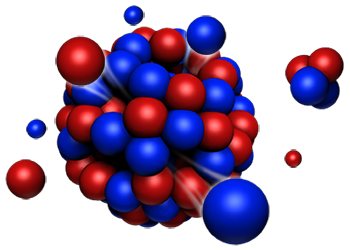Speaker
Description
Electron Beam (EB) Welding is a fusion welding process that utilizes a beam of high energy electrons to melt metals. It is a process that has been around since the 1950s. SNS uses two types of EB welding machines to manufacture Targets. The two types of machines are High Voltage and Low Voltage EB welders. EB welding provides SNS many benefits when it comes to building targets. Some of these advantages are cleanliness, quality, repeatability, flexibility, efficiency, and automation.
EB welding is performed under vacuum. The targets are welded at a vacuum of 100µTorr or lower. By welding under vacuum, the molten metal is not subject to any ambient gases. In other fusion welding processes such as Gas tungsten Arc Welding (GTAW) and Shielded Metal Arc Welding (SMAW) the molten metal is only protected by a small area of inert gas. This means that the molten metal is subject to atmospheric gases which can result in impurities and oxidation in the weld and heat affected zone (area of base metal which is not melted but has had its microstructure and properties affected by welding). The result of welding in a vacuum is a clean weld free of impurities.
Prior to welding, every piece of the target is precision machined, pre-assembled, and inspected to verify it meets the part print dimensions. Each part should meet these same print dimensions after it is welded. To do this, heat input needs to be kept at a minimum to prevent distortion. EB welding makes this possible. GTAW and SMAW processes require multiple weld passes, have significant heat input, and a large heat affected zone. The result is significant distortion of the part. EB welding has a very high depth to width ratio and can be performed in a single weld pass without filler metal. The result is a very small heat affected zone, and minimal distortion.
Prior to welding Target assemblies, samples are given to the weld operators to develop parameters. The first sample welded is a piece of flat plate that is machined to the same thickness as the Target joint to be welded. The operator will use this to come up with base settings. Next a sample is created that mimics the geometry and properties of the Target weld joint. With this sample the operator can fine tune the base settings to meet the given weld specifications. After this sample is tested and inspected to verify it meets all specified requirements the settings are saved, and weld programs are created.
Using written instructions, designated tooling, and EB welding CNC programs the welds of the SNS targets is a repeatable process. This is important for current and future planning, building, and testing of the Target assemblies.

